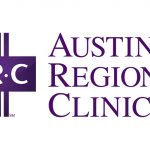Better Together: Exploring Employer-Physician Collaborations to Deliver Quality Care
Over late 2019 and early 2020, CAPP partnered with the National Alliance of Healthcare Purchaser Coalitions to conduct a series of listening sessions with employers and health care purchasers across the country to understand the context in which employers make health care purchasing decisions, what they want for their employees in terms of health care delivery, and the barriers that undermine a direct, collaborative relationship between the buyers and providers of care. The report, Better Together: Exploring Employer-Physician Collaborations to Delivery Quality Care, is now available to the public.
The results of the listening sessions uncovered a wealth of opportunities for physicians and employers to explore ways to support one another to achieve our shared goal of improving and maintaining the health of workers and all Americans. Here are some of the findings:
What employer-purchasers want from health care
- Affordable coverage
- Simple, transparent financial transactions
- The right care, not more care
- A seamless and coordinated patient experience
- Increased and timely access to specialists
- Integrated behavioral health
Why employers struggle with evaluating health care providers
- Limited discretion to design networks
- Lack resources and reliable tools to evaluate and compare provider quality
- Can’t see what’s working, only what’s not
- Distrust of health plans, consultants, and providers
High-priority areas for physician-employer collaboration
- Focusing on achieving a coordinated care experience for patients so that an illness is not economically and emotionally devastating, and medical outcomes are optimized
- Advocating for transparency on price and quality measures
- Building models of care that integrate behavioral health with medical care
Employers’ experience of national health care trends
- Fee-for-service payment system is problematic, but commercial payers slower to adopt value-based payment models
- Consolidation of smaller providers into larger groups and health systems, coupled with capital expansion, driving cost increases
- Rise of specialty service vendors, with mixed results
- Some innovative employers are trying a range of strategies with mixed results:
- Centers of excellence
- High-performing provider networks that demonstrate lower total cost of care and high quality
- Reference-based pricing strategies
- Bundled pricing arrangements
- Narrow networks
- High-deductible plans
Barriers and constraints to developing employer-provider partnerships
- Lack of transparency
- Distrust in providers
- Lack of quality metrics to evaluate providers
- Unwillingness to disrupt current physician-employee relationships
- Lack of internal resources
- Need for multi-regional solutions
- Union impacts
- Contractual constraints
- Potential employee push-back
- Market dominance
These and other results of the research will be used to initiate regional dialogues hosted by purchasing coalitions to identify ways in which employers and physician groups might work together to achieve better health outcomes. These dialogues will take place in virtual roundtable meetings later in 2020.





